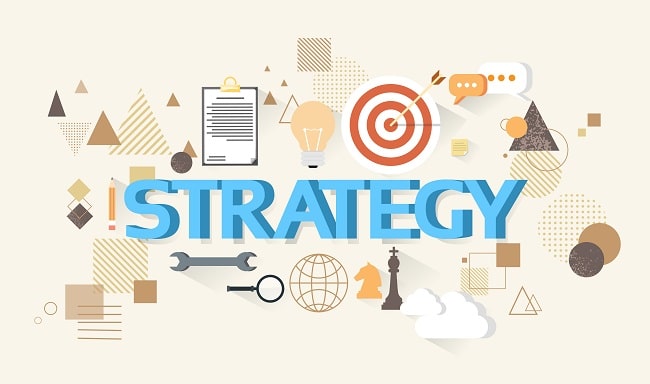Brand Marketing Strategy : Building Equity and Loyalty
A strong brand marketing strategy is essential for companies looking to build brand equity, increase customer loyalty, and boost sales over time. This comprehensive guide covers key elements every brand should have in their marketing strategy.
Defining Your Brand Identity and Messaging
The foundation of any effective brand marketing strategy starts with clearly defining what your brand stands for. This includes identifying your brand mission, vision, values, personality and positioning. It also means developing core messaging that conveys your brand promise and differentiators in a compelling way to your target audience. Having a strong sense of brand identity will act as an anchor for all marketing campaigns and initiatives.
Key elements to define include:
- Brand mission – What is your overarching purpose as a company? What problem do you solve?
- Brand vision – Where do you see your brand in the future? What do you aspire to achieve?
- Brand values – What values, beliefs and behaviors guide your brand?
- Brand personality – If your brand was a person, how would you describe their characteristics? Fun? Reliable? Innovative?
- Brand positioning – How do you differentiate from competitors? What makes you unique?

Researching Your Target Audience Insights
The most successful brand marketing strategies are rooted in a deep understanding of your target audiences. Who are their core customers? What are their pain points? How do they make decisions? What messaging best resonates with them?
Conducting ongoing audience research through surveys, interviews, focus groups and reviewing analytics can unlock insights that will strengthen your brand strategy over time. Keep tabs on audience demographics, psychographics, behavior patterns, media consumption habits and brand perceptions.
Make sure to analyze findings across key audience segments (i.e. current customers vs potential customers) to inform segment-specific strategies.
Building a Distinct and Consistent Brand Identity Across Touchpoints
Living up to the promise of your brand means maintaining a consistent identity across every branded touchpoint. From your logo, typography and color palette to imagery, packaging and messaging – customers should instantly recognize your brand’s look and voice.
Brand guidelines that cover visual identity, branded language, tone of voice and personality traits are essential for consistency. Make sure guidelines are distributed to any teams, agencies or partners creating branded materials on your behalf. Conduct periodic audits to ensure compliance.
Aim for coherence, not homogeneity. Find creative ways to translate your brand identity across different formats, contexts and locations while keeping the core elements intact.
Crafting Campaigns that Ladder up to Business Objectives
A common pitfall is launching campaigns that fail to ladder up to overarching business goals. Every brand marketing initiative should clearly map back to objectives around raising awareness, increasing consideration, driving sales or building loyalty.
Start by defining your primary brand or campaign objective then work backwards to identify supporting awareness tactics, audience targeting approaches and messaging. Paid media can fuel reach while owned channels, content and influencer activations naturally complement for optimal impact.
Measure what matters most to your objectives. For example, tracking recall, sentiment and purchase intent for awareness campaigns. Or acquisition costs, subscriber engagement and retention rates for retention efforts.
Activating Multichannel Experiences
The customer journey is no longer linear, demanding an always-on brand marketing strategy across channels. Meet audiences where they already spend time through consistent multichannel presence and synchronized cross-channel experiences.
Orchestrate messaging across paid, owned, earned and shared media for greater impact. For example, amplifying branded content through both paid social and influencer partnerships. Or sharing personalized email offers through geotargeted mobile push notifications
Eliminate barriers between channels through cohesive UX. Allow customers to move seamlessly from social to web to app with uniform branding, tailored content recommendations and integrated data profiles.
Reward brand loyalists by recognizing and incentivizing them across channels. Identify high-value groups like email subscribers and tailor money-can’t buy brand experiences.
Building Emotional Connections Through Storytelling
At its heart, branding is about making an emotional promise customers connect and identify with. Tap into storytelling across content, campaigns and communications to drive emotional resonance over rational persuasion alone.
Share your brand origin story and values. Introduce the people behind your brand through interviews, facility tours or employee spotlights. Celebrate loyal customer stories. Solicit UGC content around branded experiences or hashtags.
Go behind the scenes to fuel curiosity. Share the journey of product from concept to shelf. Spotlight artisans and new techniques. Debunk myths around ingredients, services or manufacturing.
Have a unique POV? Take a stand as a thought leader around issues relevant to your audience. Educate them through research reports, trend forecasts, conference keynotes and pointed perspective articles.
Continually Evolving Based on Performance and Insights
The brands that thrive don’t remain static. Set your strategy up for iteration by linking activity back to concrete KPIs. Collect both quantitative data and qualitative feedback directly from customers around their brand perceptions, purchases and overall experience.
Feed insights back into campaign optimization and future strategy planning. Did a partnership drive new customer acquisitions? Invest back into that channel. Did surveys reveal shifting audience interests? Pivot your content plan accordingly.
Major events, like COVID-19, can drastically impact consumer behavior and attitudes towards brands overnight. Track changes in macro trends relevant to your category. Identify new audience needs. Then revisit messaging and reallocate budgets to products, channels and campaigns best suited to the times.

Key Takeaways
An impactful brand marketing strategy requires:
- Clearly defining your brand identity and messaging
- Understanding your target audiences on an ongoing basis
- Maintaining a consistent brand experience across touchpoints
- Tying activity back to overarching business goals
- Orchestrating synchronized cross-channel campaigns
- Making an emotional promise through storytelling
- Continually optimizing based on performance and insights
With a thoughtful approach across these areas, brands can build lasting awareness, affinity and customer lifetime value over time. What aspects of your current brand marketing strategy could be strengthened? Use the framework above as a checklist for enhancing engagement and growth.
More about Marketing :
Deciphering Customer Patterns Using Survey Techniques, click here
Expert SEO Tactics: Grasping the Concept of Keyword Density, click here
Prospering in Competitive Spheres: Tactical Methods for Sales Succes, click here


